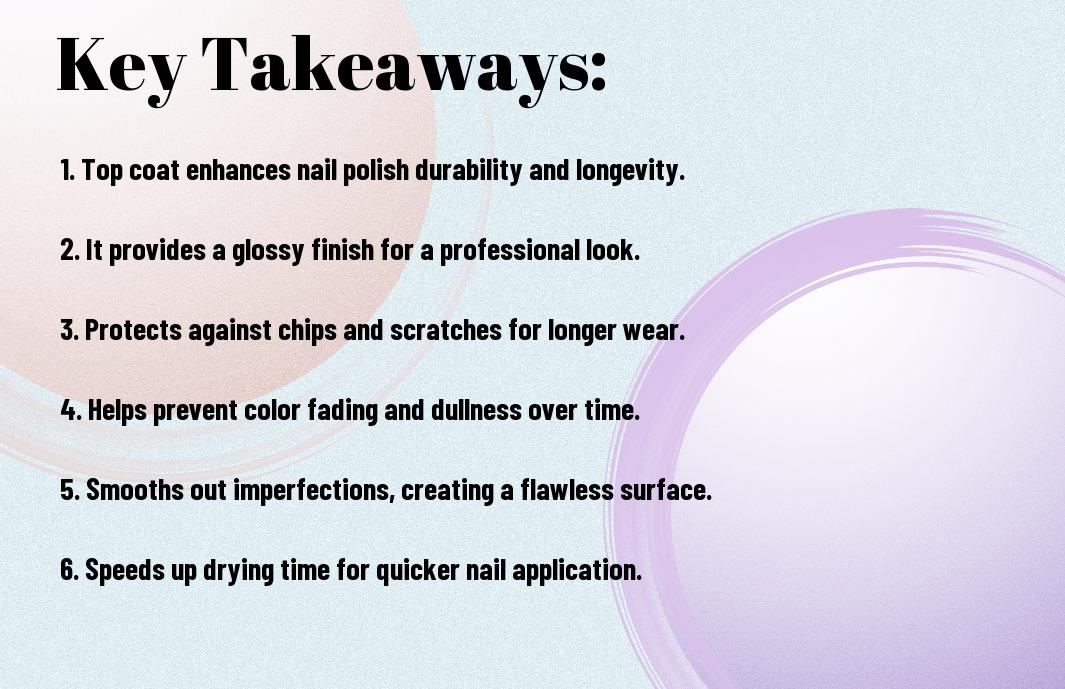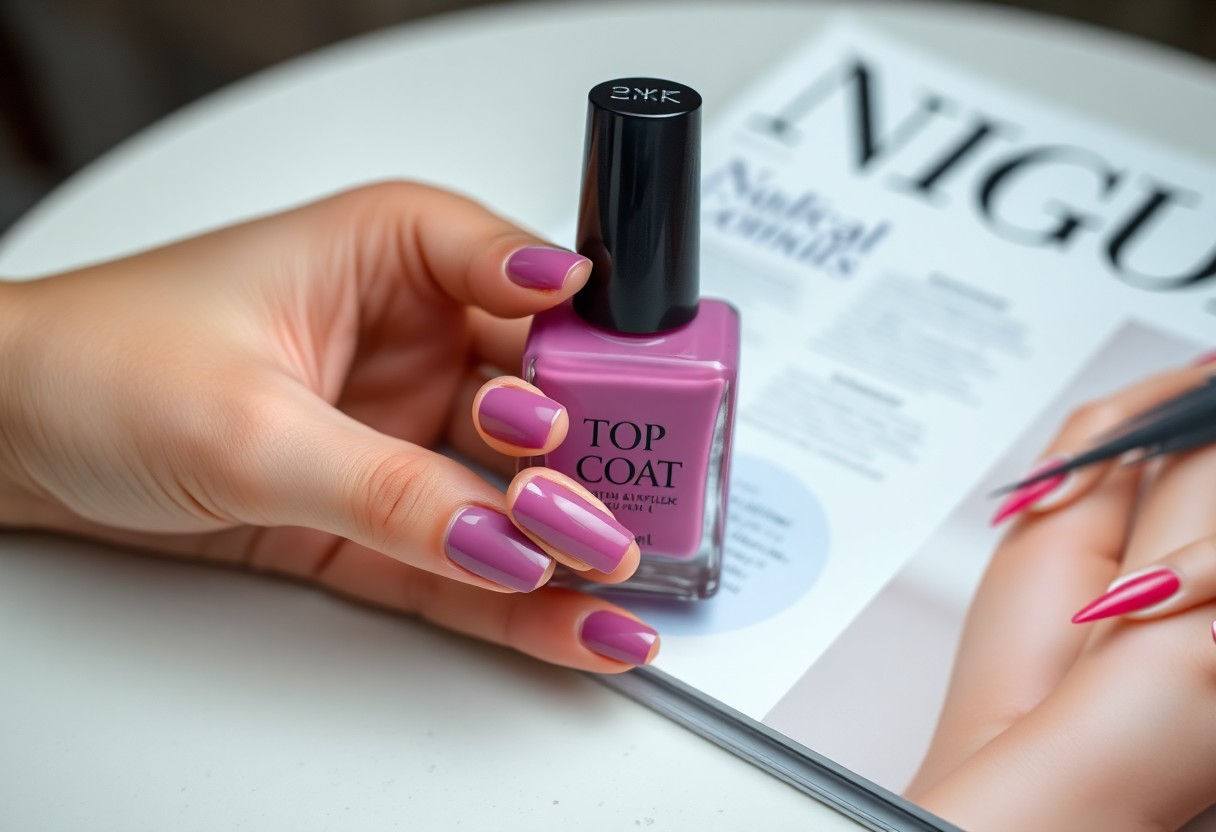It’s imperative to find the right nail drill as you begin on your nail care journey. With a multitude of options available, understanding the top-rated models can make a significant difference in your experience. This guide will help you explore the most beginner-friendly nail drills, ensuring you have the tools to achieve professional-quality results at home. Whether you’re focusing on acrylics, design work, or natural nail care, these drills will enhance your skills and efficiency in no time.
Key Takeaways:
- Beginner-Friendly Options: Look for nail drills specifically designed for novices, ensuring easy handling and operation.
- Variable Speed Settings: A drill with adjustable speeds allows greater control, catering to different nail types and techniques.
- Safety Features: Prioritize models with safety mechanisms, such as overheat protection or low vibration, to enhance comfort and protect nails.


Understanding Nail Drills
The world of nail drills can be quite vast and overwhelming, especially for beginners. These handy tools are designed to help you achieve salon-quality nail care from the comfort of your home. Understanding nail drills will not only streamline your nail care routine but also boost your confidence in using them effectively.
Types of Nail Drills
On your journey to finding the right nail drill, you will encounter various types designed for different uses. Below is a brief overview:
- Electric Nail Drills
- Manual Nail Drills
- Portable Nail Drills
- Professional Nail Drills
- Multi-functional Nail Drills
Thou can choose the one that best fits your needs.
Key Features to Consider
Beside the type of nail drill, several key features should factor into your decision-making process:
- Speed Settings
- Noise Level
- Weight and Ergonomics
- Accessibility of Bit Heads
- Safety Features
Assume that understanding these features will enhance your overall experience.
Due to the vast array of options, it helps to research deeper into the key features of nail drills. Consider the following:
- Durability
- Battery Life (for portable models)
- Ease of Cleaning
- Customer Reviews and Ratings
- Manufacturer Warranty
Assume that prioritizing these aspects ensures you invest in a reliable tool.
Top-Rated Nail Drills for Beginners
You might be overwhelmed by the selection of nail drills available on the market, but knowing which ones are top-rated can make your decision easier. These beginner-friendly nail drills provide an excellent balance of performance, ease of use, and affordability, allowing you to create beautiful manicures and pedicures without the professional price tag. Let’s probe the best models and pricing options to help you find the perfect nail drill for your needs.
Review of Best Models
About the best models, you’ll find options that cater to varying preferences and skill levels. From lightweight designs with user-friendly controls to more advanced features like variable speed settings and multiple attachments, each model ensures a smooth and enjoyable experience while working on your nails. Please consider your specific needs, whether you’re focusing on natural nails or enhancements, to choose the model that suits you best.
Comparison and Pricing
The following table summarizes the top-rated nail drills for beginners, highlighting their key features and prices to help you make an informed decision.
| Model | Price |
|---|---|
| Model A | $59.99 |
| Model B | $39.99 |
| Model C | $79.99 |
Also, this comparison allows you to weigh different features against your budget. You may find that some models offer extra features that justify a higher price, while others deliver great value at a lower cost. Consider what aspects are most important for your nail care routine, such as portability or power, as these can significantly influence your final choice.
Safety Tips for Using Nail Drills
Now that you’re ready to use your nail drill, it’s important to prioritize safety. Here are some tips to keep in mind:
- Always wear eye protection to shield against dust and debris.
- Adjust the drill speed according to the thickness of the nail.
- Keep your workspace clean to avoid accidents.
- Never force the drill; let it do the work to prevent overheating.
Thou shall ensure your safety by following these guidelines.
Proper Handling Techniques
Against common belief, using a nail drill is not just about technique; it’s also about how you handle the tool. Always hold the drill firmly while maintaining a steady hand. Position the drill at a slight angle to the nail, avoiding flat contact to ensure even filing. Moreover, be cautious of how long you spend on each section to prevent excessive heat buildup. This way, you’ll enhance your precision and minimize risk.
Maintenance and Care
Behind every great nail drill is a commitment to maintenance and care. Regularly clean your drill bits and inspect them for wear, as this ensures optimal performance and longevity. Always store your nail drill in a safe place, away from moisture and extreme temperatures, which can damage the equipment. Additionally, replace worn-out bits promptly to maintain efficiency and prevent damage to your natural nails.
A key aspect of using a nail drill effectively lies in its maintenance. Regular cleaning removes dust and debris that can accumulate during use, allowing for smoother operation. Ensure you also check the power cord and plug for any signs of wear. Keeping your equipment in good condition will not only extend its lifespan but also enhance its performance, giving you the best results every time you use it.
Common Mistakes to Avoid
Unlike seasoned nail technicians, beginners may find themselves making some common mistakes when using nail drills. It’s beneficial to educate yourself through resources and communities, such as discussing your concerns in the thread titled First Timer Question! What is the best nail drill?. This can help you avoid pitfalls and make your nail drilling experience much smoother.
Overuse of Drill
At times, you may be tempted to rely too heavily on your nail drill, which can lead to damaged nails or excessive thinning. It’s important to find a balanced approach and allow your natural nails to recover.
Ignoring Safety Protocols
About not adhering to safety protocols, you may unintentionally expose yourself to potential harm. Proper technique and tool use can safeguard not just your nails, but your overall health during nail care procedures.
Protocols for nail safety include using a dust mask to avoid inhaling nail dust, ensuring proper eye protection, and maintaining a clean workspace to prevent infections. Additionally, familiarize yourself with the specific instructions for your nail drill and the bits to avoid misuse. Investing time in understanding these guidelines will enhance both your skills and safety.
FAQs About Nail Drills
Your journey in mastering nail drills may leave you with questions. To help you navigate through common concerns, consider checking out this Nail Drill For Beginners resource. Here, you’ll find insights on various aspects, from usage to maintenance, ensuring you make informed decisions as you develop your skills.
How to Choose the Right Drill
After determining your skill level and specific needs, assess features such as speed settings, power source, and ease of use when selecting a nail drill. Beginners typically benefit from more versatile models that offer variable speeds and safety features, making it easier to gain confidence while honing your technique.
Troubleshooting Common Issues
To ensure optimal performance, keep an eye out for common issues such as overheating, uneven filing, or excessive vibration. Addressing these concerns early can improve your overall nail care experience and prolong the life of your drill.
Further, if you encounter overheating, consider taking breaks between tasks, as prolonged use can lead to equipment failure. Uneven filing may be remedied by adjusting your technique or using different drill bits for various tasks. Should you experience excessive vibration, make sure the drill is securely connected or consult the manual for tightening instructions. Troubleshooting can elevate your efficiency and enjoyment of nail care.
Resources for Further Learning
For those looking to deepen their understanding of nail drills and techniques, exploring a variety of educational resources can be very beneficial. This can include online courses, workshops, and reputable websites that focus on nail care and design. Engaging with these resources will help you enhance your skills and stay up-to-date with the latest trends in the industry.
Online Courses and Workshops
Between the multitude of platforms available today, you can find online courses that cater specifically to beginners in nail art and drill usage. These courses often cover the basics of nail drills, safety protocols, and practical applications, allowing you to learn at your own pace while gaining hands-on experience.
Recommended Websites and Blogs
Across the internet, numerous websites and blogs provide valuable insights and tutorials on nail drills and techniques suitable for beginners. These resources often feature step-by-step guides, tips from professionals, and reviews of tools that can enhance your skills while helping you navigate the world of nail care effectively.
Recommended websites and blogs, such as Nailpro and The Nail Hub, offer extensive knowledge and expert recommendations. You can find everything from instructional videos to product reviews and expert interviews. By visiting these sites regularly, you’ll be better equipped to choose the right nail drill and master your technique, ultimately improving your nail care expertise.
To wrap up
As a reminder, investing in a top-rated nail drill as a beginner can significantly enhance your nail care routine, making it easier and more efficient. Selecting the right drill that suits your specific needs will not only improve your skills but also help you achieve professional-quality results at home. Pay attention to features such as adjustable speed settings, ease of use, and durability when making your choice. With the right tool in your hands, you can elevate your nail game and enjoy the process of nail artistry with confidence.







